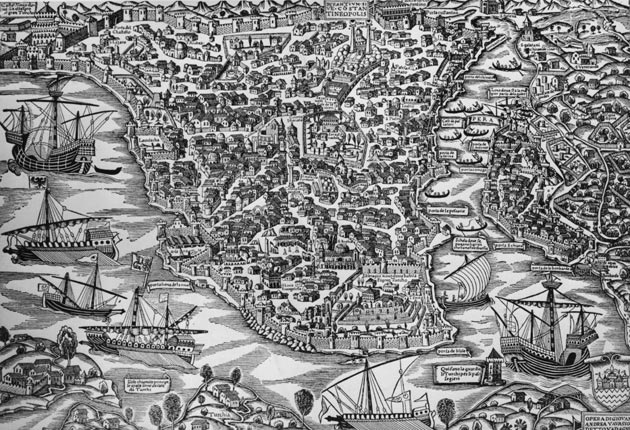The Architect’s Apprentice by Elif Shafak, book review: Istanbul stars in its own story
Shafak's depth and breadth of scope make this an absorbing and moving work

When an author beautifully evokes a sense of place in a novel, it’s something of a cliché to describe that setting as almost a character in its own right.
But there really is no other way to talk about Istanbul in this sumptuous piece of historical fiction from the famous Turkish writer Elif Shafak, the plot and characters being so carefully and intricately intertwined with the very existence of the city that shapes them.
It is the 16th century and Istanbul is the centre of the Ottoman Empire, the Sultan holding sway over everyone from the grandest of lords to the lowliest of beggars. Into this maelstrom and chaos comes Jahan, a naive Indian boy who brings the exotic gift of a white elephant to the Sultan’s menagerie.
Jahan becomes the elephant’s mahout or tamer, and the animal quickly curries favour in the Sultan’s court, being used for everything from street entertainment to battles. At the same time, Jahan becomes apprenticed to Sinan, the real-life chief royal architect, and begins to learn the secrets of building design and construction.
Sinan’s life was extraordinary, spanning the rule of three sultans, responsible for hundreds of buildings and for shaping the face of Istanbul even to this day, and he was considered on a par with Michelangelo in the West.
Jahan slowly rises up through the ranks, and his presence in the royal court brings him into contact with the beautiful, caring and smart Princess Mihrimah, providing a sadly unfulfilled romance that traces a melancholic path through most of The Architect’s Apprentice.
There are various other plot strands of courtly intrigue, treachery and even murder weaving through the book and driving things along, although there are moments when things happen a little too coincidentally and conveniently to be credible.
But throughout it all the city is the real star, the teeming bustle of the streets, the whorehouses and palaces, the markets and mosques, the dungeons and bridges. And as the narrative progresses, the work of Sinan, Jahan, and Chota the elephant begins to take on greater meaning, the constant construction and destruction, the endless reinvention and renewal, acting as powerful metaphors. At one point Jahan realises that the secret of his master’s success lies not in toughness or indestructibility, “but in his ability to adapt to change and calamity, and to rebuild himself, again and again, out of the ruins”. It’s this kind of depth and breadth of scope that makes The Architect’s Apprentice an absorbing and moving piece of work.
Subscribe to Independent Premium to bookmark this article
Want to bookmark your favourite articles and stories to read or reference later? Start your Independent Premium subscription today.

Join our commenting forum
Join thought-provoking conversations, follow other Independent readers and see their replies